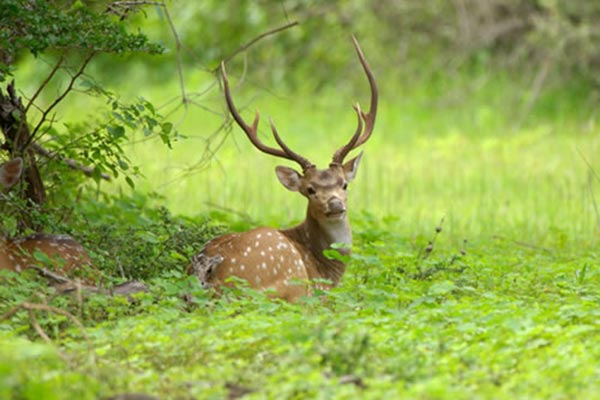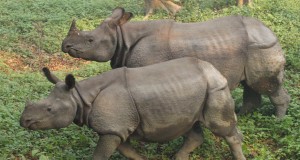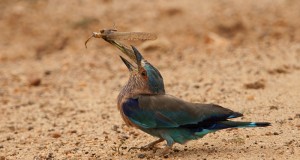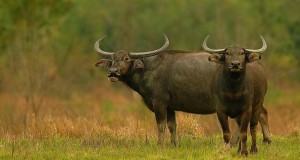Ueda Walawe National Park: Lying south of the central hills of Sri Lanka is this 1 19- sq-mile (308-sq-km) park, established with the prime objective of conserving the catchment area of the Uda Walawe reservoir. Today, a large variety of game, especially elephants from the heavily exploited jungles around have found protection here and have made it their home.
Still under development, the park has 20 miles (32 km) of dry-weather road and six miles (10 km) of jeep track. Due to this area having been heavily exploited in the past for 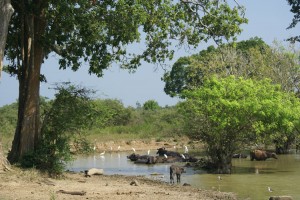 china (slash and burn) farming, a part of the park is devoid of forest cover and, except in the months of June-September, is almost entirely covered by a tall golden grass which makes game viewing in these parts difficult. After September, the grass dies, transforming the whole areas two species of trees not found in other Sri Lankan national parks, the mandorang (Vatica sinensis ) and daminiya (Grewia The elephants seen here are magnificent specimens and large herds wander along the river and sometimes in the plains. They are very wild and shy and make off at the first whiff of man. Leopards and bears have rarely been sighted. The park is superb for bird-watching, especially for the more uncommon species.
china (slash and burn) farming, a part of the park is devoid of forest cover and, except in the months of June-September, is almost entirely covered by a tall golden grass which makes game viewing in these parts difficult. After September, the grass dies, transforming the whole areas two species of trees not found in other Sri Lankan national parks, the mandorang (Vatica sinensis ) and daminiya (Grewia The elephants seen here are magnificent specimens and large herds wander along the river and sometimes in the plains. They are very wild and shy and make off at the first whiff of man. Leopards and bears have rarely been sighted. The park is superb for bird-watching, especially for the more uncommon species.
Two campsites are available, both by the river, under a canopy of large trees, amidst scenery that could hardly be bettered. Lahugala National Park: The lodge at Laliugala is undoubtedly the finest place in Sri Lanka from which to watch wild elephant without much ado and in comfort. The six square miles (15.5 sq km) encompass two former irrigation tanks, Laliugala and Kitulana. which are both completely covered bv a tall succulent grass called heru (Oplisminus compositus ), a favorite of the elephants. These two tanks lie slap in the middle of the elephant corridor that connects the Yala region to the Gal Ova region. Thus, one is almost assured of seeing elephants here, throughout the day, every day of the year. Herds in excess of 150 animals have been recorded.
While the two tanks are also famous for their birdlike , mostly aquatic types and birds of prey, the quarter-mile (400-meter) strip of dense forest south of the tanks and north of the Heda Oya (river) offers the visitor some rare species like the elusive red faced malkoha and the blue magpie. Leopard and hear are extremely rare here but have been seen on the road leading to the lodge and also by the tank. The area immediately surrounding the Lahugala lodge and the rocks behind are also fine places to study a variety of uncommon butterflies.
Maduru Oya National Park: Established in November 1983, this is Sri Lanka’s newest national park and is still at the beginning of its development. It is situated east of ancien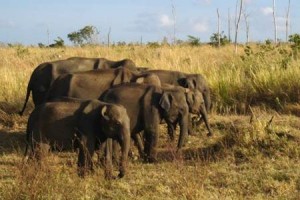 t Polonnaruwa. It has been established primaril y to conserve the catchment area of the three reservoirs — Maduru Ova , Ulhitiya and Ratkinda — and to provide a secure home for the magnificent marsh elephant whose environment has been depleted by agricultural development. Also a proposed corridor to Gal Oya will complete the chain of connected National Parks ending at Yala in the south.At present, the park is fairly open country consisting of mainly bush type vegetation which gives way to fairly dense forest along the Maduru Ova river.Leopard and bear have been seen while herds of deer and sambar have just started moving in. Birdlife of all kinds is plentiful. There is still no accommodation or established campsite available within the park.
t Polonnaruwa. It has been established primaril y to conserve the catchment area of the three reservoirs — Maduru Ova , Ulhitiya and Ratkinda — and to provide a secure home for the magnificent marsh elephant whose environment has been depleted by agricultural development. Also a proposed corridor to Gal Oya will complete the chain of connected National Parks ending at Yala in the south.At present, the park is fairly open country consisting of mainly bush type vegetation which gives way to fairly dense forest along the Maduru Ova river.Leopard and bear have been seen while herds of deer and sambar have just started moving in. Birdlife of all kinds is plentiful. There is still no accommodation or established campsite available within the park.
Yala East National Park: Yala East is one of the most scenic national parks in Sri Lanka and is situated northeast of Yala. The vegetation here is semi-arid, with large open areas. During the flowering season the yellow blossoms of the Crataeva rezrhurgiana make the park even more attractive.
The I 6-mile (25-km) main track starts at Okanda. It is motorable in dry weather. Another 30 miles (48 km) of rough jeep track are also available. Along the main track, one comes across some very picturesque lancelets , plains and four saline lagoons. During the migratory season, the lagoons are filled with ducks, mostly pintail and garganev .
The big game found here are elephants, sometimes in large herds, leopards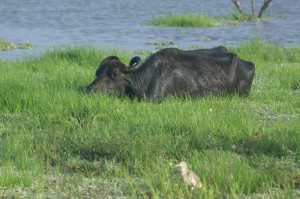 and bears, the last found in the more forested areas of the park. Yala East is another place in which to watch out for the red-faced malkoha and the blue magpie. The main attraction of the park however is the Kumana mangrove swamp. This is the only place in the island with such large concentrations of resident birds gathered for nesting. This is usually around June and July.Boating facilities are available at Kumana. Two lodges are available for overnight stay.
and bears, the last found in the more forested areas of the park. Yala East is another place in which to watch out for the red-faced malkoha and the blue magpie. The main attraction of the park however is the Kumana mangrove swamp. This is the only place in the island with such large concentrations of resident birds gathered for nesting. This is usually around June and July.Boating facilities are available at Kumana. Two lodges are available for overnight stay.
Gal Ova National Park: The mighty Senanayake Samudra reservoir in Sri Lanka is totally encompassed by this national park which was established to conserve its catchment area. Today it has become an elephant playground. It lies east of the central hills of the island.
The park has no roads, but boating is available in the reservoir. During the dry season large herds of elephants can be seen cooling off and drinking at the water’s edge. This could well be the only place where one can see groups of these great creatures swimming across deep water to the numerous islands to feed on the succulent grass growing on them. When the elephants are swimming in deep water, they can be approached easily by boat.
The reservoir is also the home of millions of birds, all aquatic types, and among them would be the cormorants, darters, pelicans and a variety of gulls. During the nesting season, a boat will be literally surrounded by these flocks, as they swim along with it. Birds of prey too are plentiful. This is the best place to observe the majestic whitebellied sea eagle and the tank eagle, the island’s two largest birds of prey.
About a quarter of the park is dry evergreen forest while the rest is tall grassland savanna. An interesting feature of the vegetation here is the extensive areas under medicinal plants. These were first laid by ancient Sinhala monarchs and have survived to this day.
A privately owned spacious hotel and a jungle lodge are available for overnight stay.
Sinharaja Forest Reserve: Though declared a foresLreserve and very soon going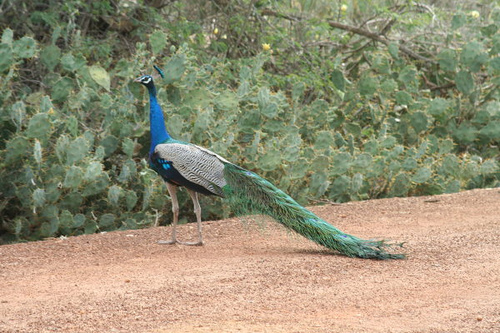 to be given total protection on being named a “National Heritage,” Sinharaja is as yet undeveloped for visitors. However, excursions can be made into the reserve and travel agents should be able to put one in touch with those who can arrange these visits. Sinharaja is a small belt of forest no more than four miles (6.5 km) at its widest and half a mile (800 meters) at its narrowest point. Its total area is only about 21,000 acres (8500 hectares). Yet what makes Sinharaja unique is that it is the only patch of primeval forest remaining in any significant proportions in Sri Lanka.
to be given total protection on being named a “National Heritage,” Sinharaja is as yet undeveloped for visitors. However, excursions can be made into the reserve and travel agents should be able to put one in touch with those who can arrange these visits. Sinharaja is a small belt of forest no more than four miles (6.5 km) at its widest and half a mile (800 meters) at its narrowest point. Its total area is only about 21,000 acres (8500 hectares). Yet what makes Sinharaja unique is that it is the only patch of primeval forest remaining in any significant proportions in Sri Lanka.
The vegetation of Sinharaja is worth looking at. Three-fourths of the total or 125 species of trees there are endemic. An International Union for the Conservation of Nature report states that many of the endemic trees are also dominant components of the canopy, representing an i mportant gene pool found nowhere else in the world.
Though controlled logging which directly threatened this patch of primeval tropical rain forest some years ago has been stopped, illicit logging still continues to a minor extent.
Sinharaja is also the home of all types of the island’s wildlife, small and big, excepting the elephant, including some unique insect species.
Horton Plains: At an elevation of 7200 feet (2200 meters) on the Haputale range in Sri Lanka is a saddle of rolling patnas or grassland and stark evergreen montane forest known as the Horton Plains. This is one of the most forbidding yet most stupendously beautiful places on the island. The main attractions here are the two “world’s ends,” from where one can see the escarpment fall vertically 900 feet (280 meters) from one and a dramatic 2900 feet (900 meters) from the other. The second and third highest peaks in the island, Kirigalpotha and Thotupola, are also easily accessible from the plains, while two other eye-catchers are Bakers Falls and the Slab-rock Falls.
Magnificent specimens of leopard are met with, though rarely, while sambar ca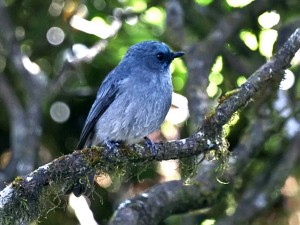 n be seen daily on the plains. Two types of monkeys are also seen, the purple-faced leaf monkey and the highland torque monkey, both of which are confined to the hills. Among the reptiles found here are three unique species — the nose horned lizard ( Cerataphora stodarti), the Calotes ugri-labris and the Cophotes ceylonica. . The yellow-eared bulbul, the dusky blue flycatcher and the Ceylon white eye are endemic birds seen here amongst a host of other birds that are confined to the hills. The most majestic of them is the powerful mountain hawk eagle.Permits for camping and trout fishing can be obtained from the Department of Wild Life.
n be seen daily on the plains. Two types of monkeys are also seen, the purple-faced leaf monkey and the highland torque monkey, both of which are confined to the hills. Among the reptiles found here are three unique species — the nose horned lizard ( Cerataphora stodarti), the Calotes ugri-labris and the Cophotes ceylonica. . The yellow-eared bulbul, the dusky blue flycatcher and the Ceylon white eye are endemic birds seen here amongst a host of other birds that are confined to the hills. The most majestic of them is the powerful mountain hawk eagle.Permits for camping and trout fishing can be obtained from the Department of Wild Life.

